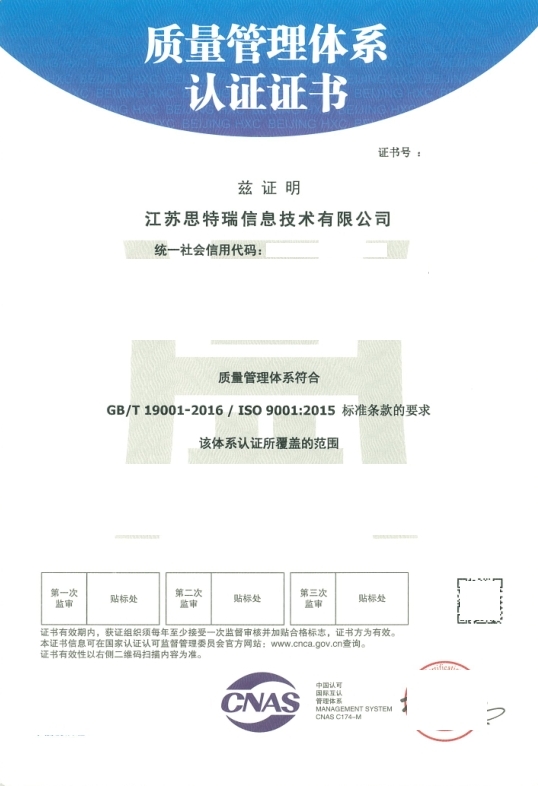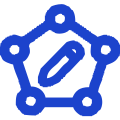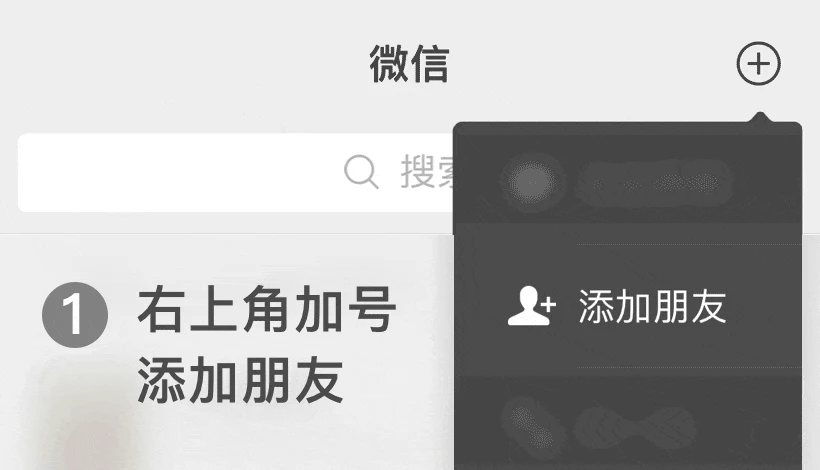
 Professional services are guaranteed
Professional services are guaranteed One on one full process guidance
One on one full process guidance Efficient and fast experience
Efficient and fast experience(I.) Standard Overview
ISO9001 is a quality management standard developed by the International Organization for Standardization (ISO), aimed at helping organizations establish, implement, and maintain quality management systems to ensure that their products and services continue to meet the requirements of customers and applicable laws and regulations.
This standard applies to organizations of any type and size, whether they are manufacturers, service providers, or non-profit organizations.
(II.) Core Content
The core content of ISO9001 revolves around the establishment, implementation, monitoring, and improvement of the quality management system, mainly including the following aspects:
1. Customer Focus: Organizations should always prioritize customer needs and ensure that products and services meet their expectations and requirements.
2. Leadership role and full participation: Senior managers need to play a leadership role, formulate quality policies and goals, and ensure that all employees actively participate in quality management work.
3. Process approach: Adopt the Plan Do Check Improve (PDCA) cycle to comprehensively manage and optimize the organization's business processes.
4. Continuous improvement: Through internal audits, management reviews, and customer feedback, continuously identify and improve problems in the quality management system, and enhance the level of quality management.
(III.) Implementation significance
By implementing the ISO9001 standard, enterprises can benefit from the following:
• Improve product quality and service level, enhance customer trust.
• Optimize internal management processes and improve operational efficiency.
• Reduce quality risks, minimize customer complaints and return rates.
• To provide strong qualifications for participating in market competition and meet customers' requirements for quality management systems.
(I.) Standard Overview
ISO14001 is an environmental management system standard issued by the International Organization for Standardization, aimed at helping companies reduce their impact on the environment and achieve sustainable development by establishing an environmental management system.
This standard applies to organizations of any size and industry, emphasizing strategic planning of environmental management and proactive adoption of environmental protection measures.
(II.) Core Content
The core content of ISO14001 standard includes:
1. Development of environmental policy: Organizations need to clarify their commitment to environmental protection, including compliance with laws and regulations, pollution prevention, and continuous improvement of environmental performance.
2. Environmental factor identification and assessment: Identify environmental factors in organizational activities, products, and services, assess their impact on the environment, and develop corresponding control measures.
3. Compliance management: Ensure that organizational operations comply with relevant environmental laws, regulations, and other requirements.
4. Operation control and emergency preparedness: Control activities that may have significant environmental impacts, develop emergency plans, and respond to sudden environmental events.
5. Monitoring and performance evaluation: Through monitoring and measurement activities, evaluate the operational effectiveness of the environmental management system and continuously improve environmental performance.
(III.) Implementation significance
By implementing the ISO14001 standard, companies can benefit from the following:
• Enhance the level of corporate environmental management and reduce environmental risks.
• Enhance corporate social responsibility and establish a positive social image.
• Meet the environmental management requirements of customers and the market, and enhance market competitiveness.
• Reduce operating costs through measures such as energy conservation and emission reduction.
(I.) Standard Overview
ISO45001 is an occupational health and safety management system standard published by the International Organization for Standardization for managing occupational health and safety. It aims to help various organizations systematically manage occupational health and safety risks, prevent workplace accidents and occupational diseases, and ensure the health and safety of employees and stakeholders.
This standard was released in 2018, replacing the original British standard OHSAS 18001 and becoming the globally unified occupational health and safety management system standard.
(II.) Core Content
The core content of ISO45001 standard includes:
1. Leadership role: Senior managers need to commit to and lead the construction of occupational health and safety systems.
2. Employee participation: Encourage employees to participate in risk assessment and provide improvement suggestions.
3. Risk orientation: Identify hazards (such as mechanical injury, chemical exposure, psychological stress), assess risk levels, and prioritize controlling high risks.
4. Regulatory compliance: Ensure compliance with occupational health and safety laws and regulations in the country/region where it is located.
5. Continuous improvement: Continuously optimize the management system through audits, performance monitoring, and corrective measures.
(III.) Implementation significance
By implementing the ISO45001 standard, companies can benefit from the following:
• Enhance the level of occupational health and safety management in enterprises and reduce the risk of accidents.
• Protect employee health, enhance employee satisfaction and loyalty.
• Meet the requirements of customers and the market for occupational health and safety, and enhance market competitiveness.
• Avoid economic losses and legal risks caused by occupational health and safety accidents.
(I.) Standard Overview
GB/T50430 is a national standard for quality management of engineering construction enterprises, aimed at regulating the quality management behavior of engineering construction enterprises and improving project quality.
This standard combines the characteristics of the engineering construction industry and puts forward specific requirements for the quality management system of construction enterprises.
(II.) Core Content
The core content of GB/T50430 standard includes:
1. Establishment and implementation of quality management system: Construction enterprises are required to establish a sound quality management system, clarify quality policies and objectives.
2. Process management: Quality control covering the entire process of design, procurement, construction, and acceptance of construction projects.
3. Resource management: Ensure that the enterprise has sufficient resources, including human resources, equipment and facilities, to meet the requirements of the quality management system.
4. Performance evaluation and improvement: Evaluate the operational effectiveness of the quality management system through internal audits, management reviews, and customer feedback, and take corrective measures to continuously improve quality performance.
(III.) Implementation significance
By implementing the GB/T50430 standard, construction companies can benefit from the following:
• Improve project quality and enhance customer trust.
• Optimize internal management processes and improve operational efficiency.
• Reduce quality risks and minimize economic losses caused by quality issues.
• To provide strong qualifications for participating in market competition and meet customers' requirements for quality management.
Through integrated certification (four standard integration), enterprises can achieve:
1. Resource intensification: Unified document system and internal audit process to reduce management costs
2. Risk concentration control: Incorporate quality, environmental, and safety risks into the same assessment framework
3. Strategic consistency: Based on ISO9001 framework, embedded with ISO14001 environmental objectives and ISO45001 safety indicators
4. Market competitiveness: Meet the mandatory requirements of the bidding party for multi system certification (such as central enterprises and multinational projects)
Implementation path:
•Gap analysis: diagnose existing management shortcomings
• System design: Customize integrated file architecture (such as merging chapters of the Management Manual)
• All staff training: Role based training of internal auditors and system implementation backbone
(I.) Core materials required for certification
General Basic Materials
1. Legal proof documents
Business license, organization code certificate/unified social credit code certificate
Administrative licensing qualifications (such as industry-specific qualifications, safety production permits, pollution discharge permits, etc.)
2. Organizational structure and responsibilities
Company organizational chart, department functional statement
Management appointment letter (such as management representative)
3. System documents
First level document: Management Manual (clarifying policies, objectives, and system scope)
Secondary files: Program files (covering standard core processes such as internal audits, management reviews, document control, etc.)
Level 3 documents: homework instructions, operating procedures, record forms
4. Evidence of operation records
Internal audit report and rectification records
Management Review Report
List of laws and regulations and compliance evaluation report
Special supplementary materials
Key supplementary materials for system standards
ISO9001- Customer Requirements Review Record
-Design and development control documents (if any)
-Supplier Evaluation Record
-Product Inspection/Service Verification Record
ISO14001- Environmental Factor Identification and Evaluation Checklist
-Environmental target indicators and management plan
-Wastewater/Waste Gas/Noise Monitoring Report
-Emergency drill records
ISO45001- Hazard Identification and Risk Assessment Report
-Occupational health and safety objectives and plans
-Occupational Disease Physical Examination Report
-Accident Handling Record
GB/T50430- List of Construction Projects and Contract Ledger
-Subcontractor Evaluation Record
-Construction organization design/special plan
-Material entry acceptance form and process handover record
Note: GB/T50430 needs to be integrated with ISO9001 certification, and the materials must cover both requirements.
(II.) Basic requirements for certification application
1. Legal operation
The enterprise has been registered for more than 3 months and has actual business activities.
No serious violations of laws and regulations (such as environmental penalties, major safety accidents).
2. System establishment and operation
Complete the preparation of system documents and have been in formal operation for at least 3 months.
Complete at least one complete internal audit and management review.
3. Clear coverage area
The scope of certification should be consistent with the company's qualifications and actual business (such as specific products, engineering categories, or services).
4. Industry compliance (key)
ISO14001: Environmental impact assessment approval and pollutant discharge permit (if applicable) are required.
ISO45001: Safety pre assessment and occupational hazard declaration certificate are required.
GB/T50430: Only applicable to engineering construction enterprises, requiring qualifications for construction general contracting/professional contracting.
5. Special requirements
When applying for ISO9001, construction enterprises must simultaneously certify GB/T50430 (a mandatory requirement in China).
(III.) Important note
• Material timeliness: All documents and records must reflect operational evidence from the past 3-6 months.
• On site consistency: The management system needs to be effectively implemented in actual business, not just a 'paper process'.
• Version validity: Ensure the adoption of the latest standards (such as ISO9001:2015, ISO45001:2018, etc.).
The following is the standardized process for obtaining ISO9001, ISO14001, ISO45001, and GB/T50430 management system certifications, which consists of four stages and 11 key steps and is applicable to the vast majority of certification scenarios:





Wechat ID:Siterui888888
Add a wechat friend to get free plans and quotations


 Contact
Contact




 定制化解决方案
定制化解决方案 专业咨询指导
专业咨询指导 透明化服务
透明化服务 长期顾问式合作
长期顾问式合作